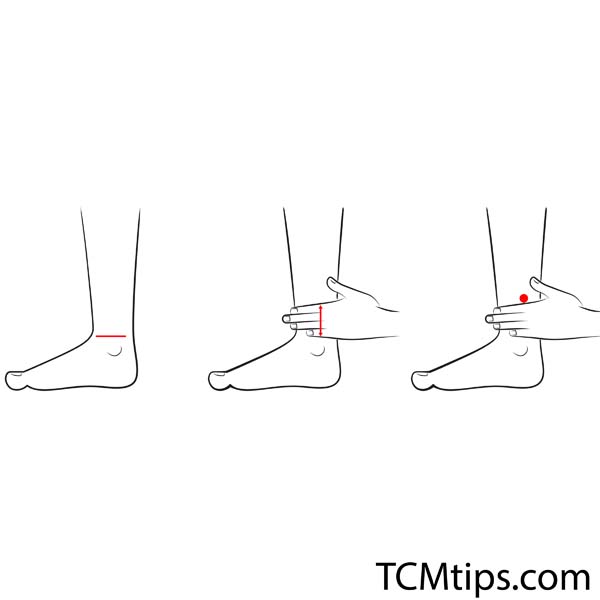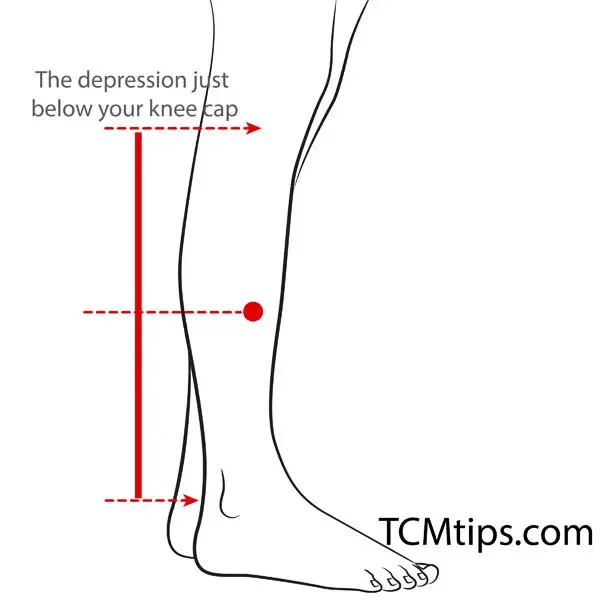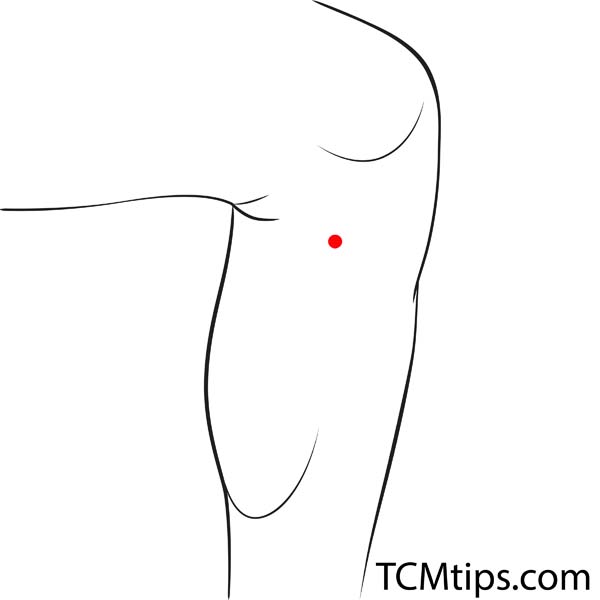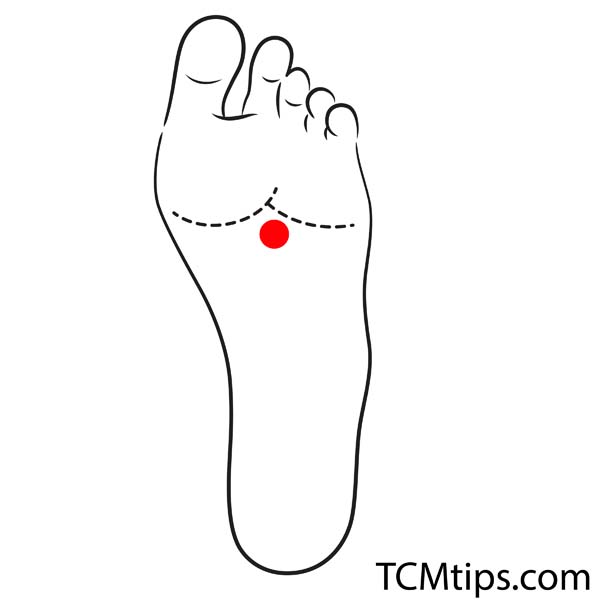Relieve Swollen Feet with These Pressure Points
Swollen feet can be a frustrating issue, whether it’s due to standing too long, pregnancy, or underlying health conditions. Fortunately, Traditional Chinese Medicine (TCM) offers a natural solution through acupressure. By applying pressure to specific points on the body, you can reduce swelling and improve circulation. In this article, we’ll explore key pressure points that help alleviate swollen feet. To ensure accuracy and effectiveness, we consulted Ms. Mai Sogawa, a TCM Therapist from Japan, for her expert advice.
Understanding How Acupressure Eases Swollen Feet
Acupressure is a gentle therapy that involves pressing on specific acupoints linked to energy pathways, or meridians, in the body. Stimulating these points can enhance the flow of Qi (energy) and blood, helping to reduce fluid buildup and swelling in the feet. If left untreated, swollen feet can lead to further complications, such as increased discomfort, decreased mobility, and in severe cases, more serious issues like skin ulcers or infections due to poor circulation.
Top Causes of Swollen Feet
- Prolonged Standing or Sitting: Staying in one position for too long can cause blood to pool in the lower extremities, leading to swelling.
- Pregnancy: During pregnancy, the body retains more fluid and increases pressure on the veins, leading to swollen feet, especially in the later stages.
- Edema: This condition involves an abnormal accumulation of fluid in the tissues, often caused by heart, liver, or kidney problems.
Climate’s Role: While not a primary cause, climate can influence swelling. High humidity, extreme heat, or cold and damp environments can exacerbate swelling by affecting circulation and fluid retention. In TCM, certain acupressure points can help mitigate the impact of these weather conditions.
SP-6 (Sanyinjiao)

Location: SP-6, or Sanyinjiao, is found on the inner side of the lower leg, about four finger-widths above the ankle bone.
Benefits: This point regulates the spleen, liver, and kidney meridians, which are crucial in managing fluid retention. Stimulating SP-6 helps balance these organs and reduce swelling in the feet. This point is particularly effective when swelling is exacerbated by humidity, as it aids in removing dampness from the body.
How to Stimulate: Apply firm, circular pressure on SP-6 with your thumb for 3-5 minutes on each leg, twice daily.
ST-40 (Fenglong)

Location: ST-40, known as Fenglong, is located on the outer side of the lower leg, midway between the knee and ankle, about two finger-widths from the shinbone.
Benefits: This point helps clear dampness and phlegm from the body, which can manifest as swelling in the lower extremities. Activating ST-40 is particularly useful during humid or wet weather when dampness tends to accumulate in the body, leading to swollen feet.
How to Stimulate: Press ST-40 with steady pressure for 2-3 minutes on each leg. For best results, combine it with SP-6 stimulation.
SP-9 (Yinlingquan)

Location: SP-9, or Yinlingquan, is located just below the knee on the inner side of the lower leg.
Benefits: SP-9 is effective in managing water retention and promoting fluid metabolism, making it ideal for reducing foot swelling due to dampness and edema. This point is highly beneficial in cold and damp weather, as it helps eliminate excess moisture from the body, preventing it from causing swelling.
How to Stimulate: Apply deep pressure to SP-9 with your thumb for 2-3 minutes on each leg, particularly when experiencing significant swelling.
KI-1 (Yongquan)

Location: KI-1, or Yongquan, is found on the sole of the foot, in the depression just below the ball of the foot, between the second and third toes.
Benefits: This point helps draw energy downward, reducing swelling in the feet and lower legs. KI-1 also supports kidney function, which is vital for balancing body fluids. It is especially effective in hot weather when the body tends to overheat, leading to fluid retention in the lower extremities.
How to Stimulate: Press the KI-1 point gently but firmly with your thumb or a massage tool for 2-3 minutes on each foot, especially before bedtime.
Effective Stretches to Reduce Swelling
Incorporating stretches like ankle pumps, toe flexes, and calf stretches can improve circulation and reduce swelling in your feet. These movements help prevent fluid from pooling in the lower extremities. Adding them to your routine alongside acupressure maximizes relief from swollen feet.
Tips for Using Acupressure and Stretches to Reduce Swelling
While acupressure can be highly effective, combining it with other strategies can enhance its benefits. Here are a few tips:
- Elevate Your Feet: Whenever possible, elevate your feet to help drain excess fluids and reduce swelling.
- Stay Hydrated: Drinking enough water helps to flush out toxins and can prevent fluid retention.
- Regular Movement: Avoid standing or sitting for prolonged periods; gentle walking can promote circulation.
- Wear Compression Socks: These can provide additional support and help prevent fluid from pooling in your feet.
- Mind Your Diet: Reducing salt intake can help minimize water retention, leading to less swelling.
Conclusion
Acupressure is a natural and effective way to alleviate swollen feet by targeting specific points like SP-6, ST-40, SP-9, and KI-1. Regularly stimulating these points, combined with simple stretches, can help improve circulation and reduce fluid retention, leading to more comfortable and healthy feet. Remember, if left untreated, swollen feet can lead to complications such as decreased mobility and even infections due to poor circulation. Climate conditions like humidity, heat, or cold dampness can also worsen swelling, but these pressure points can help mitigate the effects. For personalized guidance on using these techniques, consult a professional like Ms. Mai Sogawa, who can offer further insights and advice.

Try our Anti-Aging Gua Sha Tool designed to bring out your skin’s natural glow.
Best Gua Sha Product- Anti-Aging: The tool is designed to target 11 specific aging signs such as wrinkles and sagging skin. By following the 7-step routine, users can improve skin firmness and reduce fine lines naturally.
- Enhances Skincare Routine: It works effectively with serums and lotions, boosting absorption and efficacy of skincare products.
- Visible Skin Improvement: Users can expect a smoother complexion, reduced puffiness, and a more youthful appearance.
 P. Sze
P. Sze 

















